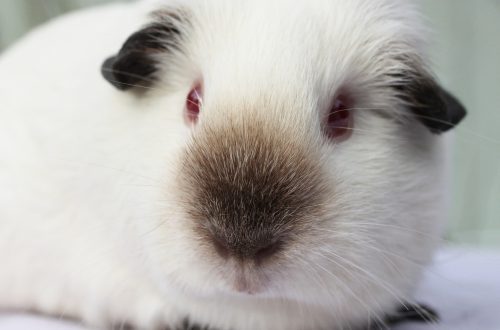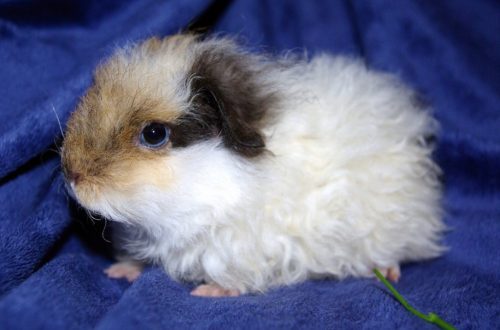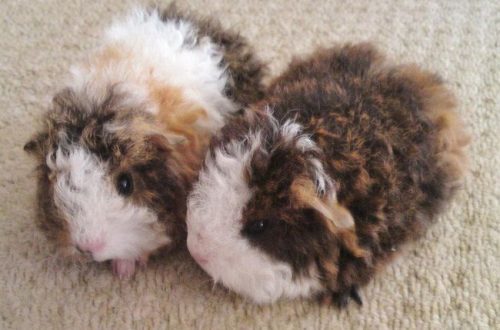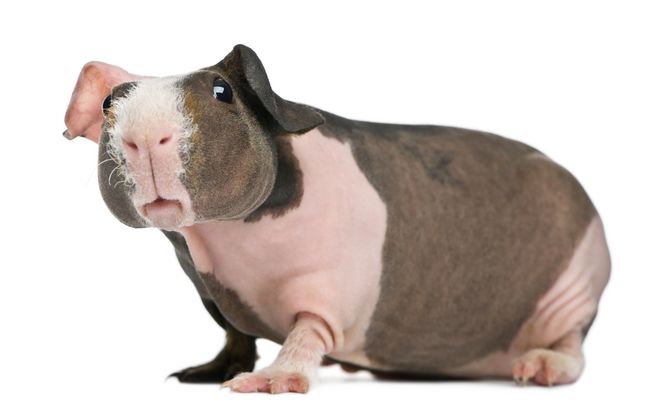
Skinny guinea pig
You are surprised, aren’t you? But this is not a mirage. This is one of the varieties of naked pigs. You will not find such a pig in a pet store. In Russia, skinny is still a rather rare breed, and you can buy such pigs only from breeders or in a nursery. To be honest, many people who are not closely related to the topic of guinea pigs do not even know that such pigs even exist. However, in the last decade, this breed has become increasingly popular, including in Russia.
And it is also immediately necessary to clarify the common misconception that hairless guinea pigs are always skinny. This is not entirely true. Hairless guinea pigs are a separate category of guinea pigs, not a breed. There are actually two breeds that fall into the category of hairless guinea pigs: the Skinny and the Baldwin. Today we will talk about the first breed.
Skinny breeders claim that this breed of guinea pigs are the most charming representatives of the pig world. At first glance, skinny is overcome by doubt and you begin to look for similarities with guinea pigs. What analogies are not given: from the side – a hippopotamus, from the back – a donkey Eeyore, from the muzzle – a tapir. This list goes on and on…
But it is better to see and touch once (and there is something to touch, believe me!), Than to read ten times.
You are surprised, aren’t you? But this is not a mirage. This is one of the varieties of naked pigs. You will not find such a pig in a pet store. In Russia, skinny is still a rather rare breed, and you can buy such pigs only from breeders or in a nursery. To be honest, many people who are not closely related to the topic of guinea pigs do not even know that such pigs even exist. However, in the last decade, this breed has become increasingly popular, including in Russia.
And it is also immediately necessary to clarify the common misconception that hairless guinea pigs are always skinny. This is not entirely true. Hairless guinea pigs are a separate category of guinea pigs, not a breed. There are actually two breeds that fall into the category of hairless guinea pigs: the Skinny and the Baldwin. Today we will talk about the first breed.
Skinny breeders claim that this breed of guinea pigs are the most charming representatives of the pig world. At first glance, skinny is overcome by doubt and you begin to look for similarities with guinea pigs. What analogies are not given: from the side – a hippopotamus, from the back – a donkey Eeyore, from the muzzle – a tapir. This list goes on and on…
But it is better to see and touch once (and there is something to touch, believe me!), Than to read ten times.

Contents
From the history of skinny guinea pigs
Among other breeds of guinea pigs, Skinny is one of the newest, newly bred breeds. They’ve only been around for 40 years! So where did this amazing breed suddenly come from? Did people discover these pigs on an uncharted island 40 years ago? No, not on an island, but rather in a laboratory, because these pigs, due to their peculiarity, could never survive in the wild. These funny little pigs appeared as a result of a natural genetic mutation in 1978 in the laboratories of the Armand Frapper Institute, which is located in Montreal, Canada. This is the first time such a mutation has been reported. The mutation arose, the phenomenon was recorded and described, but no further action was taken by scientists until 1984, when this mutation appeared again in the face of a bald albino baby.
After discovering the spontaneous genetic mutation for the second time, the scientists decided to use the related strain to create an entirely new breed of guinea pigs. And soon they succeeded. The first female was named Skinny (literal translation of “skin and bones”, with a hint of lack of hair), hence the name of the breed.
A quite reasonable question arises: why did scientists need to breed a new, such an unusual breed? Of course, for research. As you may know, guinea pigs have been, and still are, very popular laboratory animals with many experiments, as guinea pigs are mammals with similar immune systems to humans. And the skinny breed is just perfect for dermatological experiments and research.
Today, hairless pigs are a hardy breed, since very laborious work was carried out by breeders. The first hairless pigs had a very short life expectancy due to a weak immune system. To obtain a strong livestock, breeders crossed bald pigs with selfies. According to the latest recommendations of American breeders, when breeding, it is necessary to infuse the blood of carriers every two generations.
Among other breeds of guinea pigs, Skinny is one of the newest, newly bred breeds. They’ve only been around for 40 years! So where did this amazing breed suddenly come from? Did people discover these pigs on an uncharted island 40 years ago? No, not on an island, but rather in a laboratory, because these pigs, due to their peculiarity, could never survive in the wild. These funny little pigs appeared as a result of a natural genetic mutation in 1978 in the laboratories of the Armand Frapper Institute, which is located in Montreal, Canada. This is the first time such a mutation has been reported. The mutation arose, the phenomenon was recorded and described, but no further action was taken by scientists until 1984, when this mutation appeared again in the face of a bald albino baby.
After discovering the spontaneous genetic mutation for the second time, the scientists decided to use the related strain to create an entirely new breed of guinea pigs. And soon they succeeded. The first female was named Skinny (literal translation of “skin and bones”, with a hint of lack of hair), hence the name of the breed.
A quite reasonable question arises: why did scientists need to breed a new, such an unusual breed? Of course, for research. As you may know, guinea pigs have been, and still are, very popular laboratory animals with many experiments, as guinea pigs are mammals with similar immune systems to humans. And the skinny breed is just perfect for dermatological experiments and research.
Today, hairless pigs are a hardy breed, since very laborious work was carried out by breeders. The first hairless pigs had a very short life expectancy due to a weak immune system. To obtain a strong livestock, breeders crossed bald pigs with selfies. According to the latest recommendations of American breeders, when breeding, it is necessary to infuse the blood of carriers every two generations.
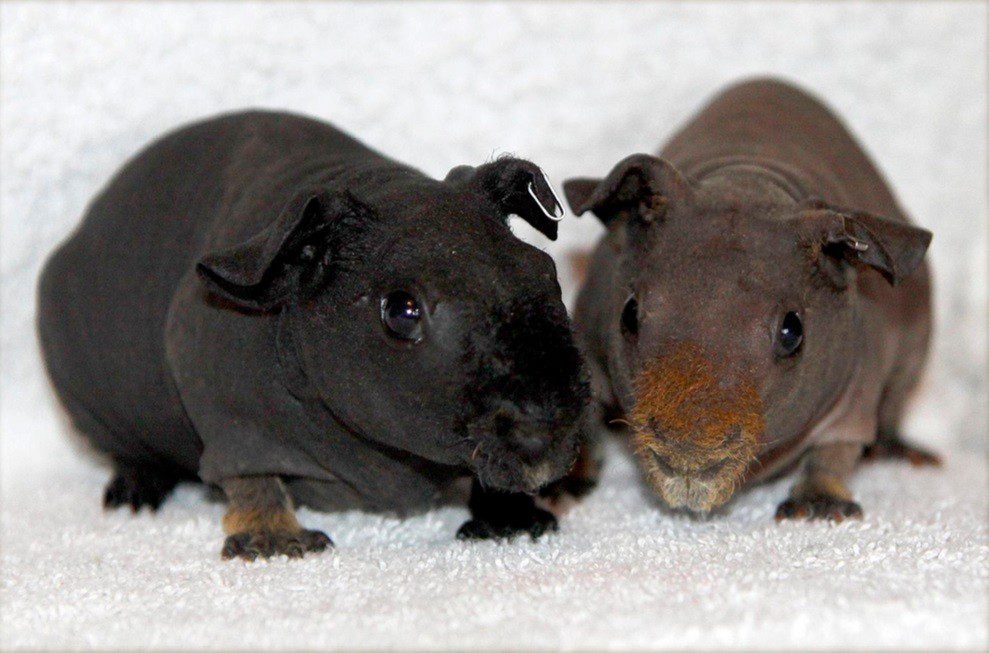
The main features of skinny guinea pigs
So, what is so special about skinny guinea pigs? Of course, the absence of wool. It should be noted that the hair in pigs is not completely absent, residual altered hair is present on the end parts of the body – on the muzzle and on the paws.
Skinny babies are born completely hairless, but the hair on the paws and on the muzzle appears as they grow older. It also sometimes happens that very light downy hair grows on the back of the skinny.
The skin of the skinny is very pleasant to the touch, velvety and tender, like a baby’s. They want to be touched and stroked again and again. The normal body temperature of a skinny is around 38 C, which is why these pigs are always so hot.
Around the neck and legs, the skin gathers in noticeable folds. It is a common misconception that due to the lack of hair, the skinny has protruding ribs and spine. This is not the case, at least not for a healthy guinea pig. Usually, the skinny has a plump and round body, the length of which reaches about 30-35 cm in adulthood.
These fun-loving guinea pigs have become extremely popular with people who can’t keep pets due to animal dander allergies. More and more people who love animals but don’t have the luxury of having a little friend at home are now the proud owners of hairless guinea pigs. As funny, inquisitive and friendly little creatures, skinnies now live in many homes around the globe.
So, the only real difference between the skinny and other guinea pig breeds is the look. Everything else – character, temperament, intelligence and behavior are quite similar.
The average life expectancy of a skinny is 6-7 years.
So, what is so special about skinny guinea pigs? Of course, the absence of wool. It should be noted that the hair in pigs is not completely absent, residual altered hair is present on the end parts of the body – on the muzzle and on the paws.
Skinny babies are born completely hairless, but the hair on the paws and on the muzzle appears as they grow older. It also sometimes happens that very light downy hair grows on the back of the skinny.
The skin of the skinny is very pleasant to the touch, velvety and tender, like a baby’s. They want to be touched and stroked again and again. The normal body temperature of a skinny is around 38 C, which is why these pigs are always so hot.
Around the neck and legs, the skin gathers in noticeable folds. It is a common misconception that due to the lack of hair, the skinny has protruding ribs and spine. This is not the case, at least not for a healthy guinea pig. Usually, the skinny has a plump and round body, the length of which reaches about 30-35 cm in adulthood.
These fun-loving guinea pigs have become extremely popular with people who can’t keep pets due to animal dander allergies. More and more people who love animals but don’t have the luxury of having a little friend at home are now the proud owners of hairless guinea pigs. As funny, inquisitive and friendly little creatures, skinnies now live in many homes around the globe.
So, the only real difference between the skinny and other guinea pig breeds is the look. Everything else – character, temperament, intelligence and behavior are quite similar.
The average life expectancy of a skinny is 6-7 years.
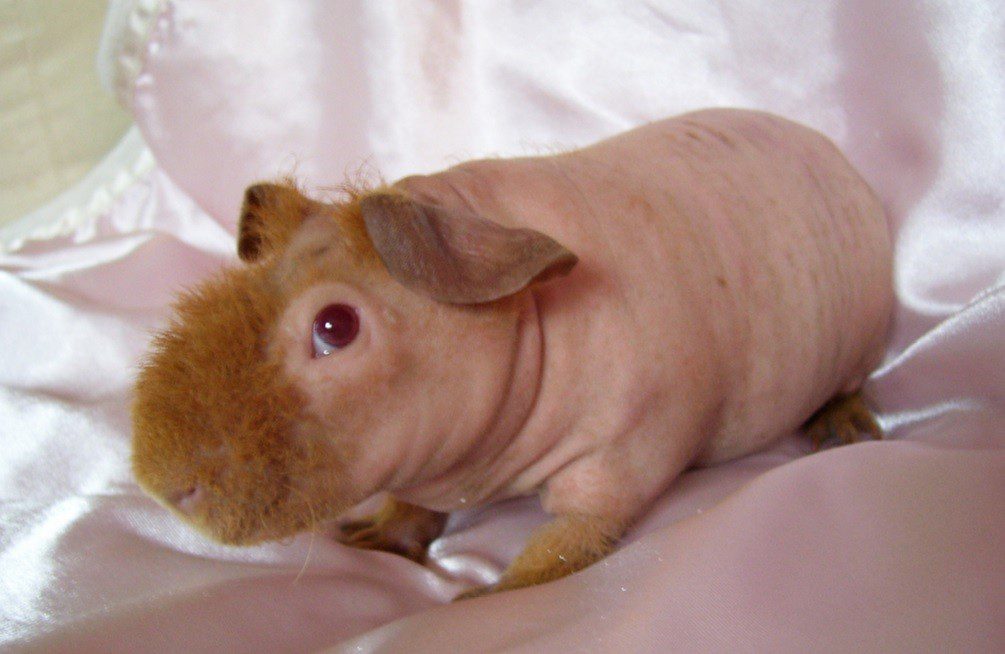
Maintenance and care of skinny at home
Maintenance and care of skinny at home
There is a big undoubted plus in caring for skinnies – these pigs have almost no hair, so you don’t need to comb, comb and wind anything on hairpins. These guinea pigs are quite unpretentious, even a child can take care of them. Skinny is quite suitable as a first guinea pig and for inexperienced breeders.
Окружающая среда
Hairless guinea pigs, including skinny, in terms of physiology are no different from their “woolen” relatives. They are also very energetic and active and have the same friendly disposition as other breeds of guinea pigs. They eat the same foods and make the same sounds. The only difference is wool, or rather, its absence.
But when it comes to caring for your skinny, there are a number of things to consider. The coat of a guinea pig is its original protective layer, and hairless pigs are deprived of this protection, so their skin is just as susceptible to exposure as ours. Except we have clothes and skinnies don’t. Hairless gilts are quite vulnerable to injury and infection, so it’s best to keep them indoors in a controlled environment as a precaution.
Skinnies are very sensitive to both cold and heat. They get heatstroke very easily, so in the summer, letting your pet out on the grass, make sure that he is not in the open sun. Only in the shade!
In addition, skinny skin, like ours, tends to tan under the sun. Therefore, when taking a skinny pig outside, apply sunscreen on the body and muzzle. Just be careful not to get in your eyes.
The ideal ambient temperature for skinnies is between +20 C and +25 C, which is slightly above the average recommended temperature for other guinea pigs. The lower temperature limit is +18 C, the upper one is +28 C.
When choosing a place for a skinny cage, you need to make sure that it is away from drafts and from cold walls.
Nutrition of skinny guinea pigs
The lack of wool is also the reason that skinny is more sensitive to temperature changes. Experts strongly recommend increasing their portion size and frequency of feeding because hairless guinea pigs have to eat more to maintain body temperature and accumulate body fat.
On average, hairless guinea pigs require three times more food than other breeds of guinea pigs. These babies chew something almost constantly to provide themselves with the necessary level of thermoregulation.
Skinnies are absolute vegetarians. Their diet consists of vegetables, fruits, grass, hay and special granulated food, which can be purchased at pet stores.
Do not forget to check that the guinea pig always has clean drinking water in the cage.
Read more about how and what to feed guinea pigs in the “Nutrition” section.
Cage for skinny guinea pigs
Any guinea pig needs a spacious cage. Keeping in small, cramped cages can be detrimental to the health and character of these animals.
The minimum size of the cage allowed by the standards of maintenance should be 0,6 square meters, which corresponds to the dimensions of 100×60 cm.
In addition to a spacious cage, skinnies will most likely need special supplies – cotton or fleece bags for sleeping or sofas for relaxing. Some owners buy or make their own clothing items for their cold pets.
About what should be a cage for a guinea pig
Do skinnies need to be bathed?
There is no unequivocal answer to this question, but in principle, bathing guinea pigs is not recommended in principle (with the exception of long-haired breeds), since any water procedures are a lot of stress for these animals. In case of severe contamination, it is better to wipe the pig with a damp cloth than to give her a bath.
If your pet’s skin becomes dry, you can apply a little of any natural oil to it.
Skinnies, like other guinea pigs, cannot stand loneliness and love the company of their relatives very much. Therefore, if you cannot buy at least one companion of the same gender for your pet, then at least devote more time to it. Play, stroke, walk, let run around the room, etc.
There is a big undoubted plus in caring for skinnies – these pigs have almost no hair, so you don’t need to comb, comb and wind anything on hairpins. These guinea pigs are quite unpretentious, even a child can take care of them. Skinny is quite suitable as a first guinea pig and for inexperienced breeders.
Окружающая среда
Hairless guinea pigs, including skinny, in terms of physiology are no different from their “woolen” relatives. They are also very energetic and active and have the same friendly disposition as other breeds of guinea pigs. They eat the same foods and make the same sounds. The only difference is wool, or rather, its absence.
But when it comes to caring for your skinny, there are a number of things to consider. The coat of a guinea pig is its original protective layer, and hairless pigs are deprived of this protection, so their skin is just as susceptible to exposure as ours. Except we have clothes and skinnies don’t. Hairless gilts are quite vulnerable to injury and infection, so it’s best to keep them indoors in a controlled environment as a precaution.
Skinnies are very sensitive to both cold and heat. They get heatstroke very easily, so in the summer, letting your pet out on the grass, make sure that he is not in the open sun. Only in the shade!
In addition, skinny skin, like ours, tends to tan under the sun. Therefore, when taking a skinny pig outside, apply sunscreen on the body and muzzle. Just be careful not to get in your eyes.
The ideal ambient temperature for skinnies is between +20 C and +25 C, which is slightly above the average recommended temperature for other guinea pigs. The lower temperature limit is +18 C, the upper one is +28 C.
When choosing a place for a skinny cage, you need to make sure that it is away from drafts and from cold walls.
Nutrition of skinny guinea pigs
The lack of wool is also the reason that skinny is more sensitive to temperature changes. Experts strongly recommend increasing their portion size and frequency of feeding because hairless guinea pigs have to eat more to maintain body temperature and accumulate body fat.
On average, hairless guinea pigs require three times more food than other breeds of guinea pigs. These babies chew something almost constantly to provide themselves with the necessary level of thermoregulation.
Skinnies are absolute vegetarians. Their diet consists of vegetables, fruits, grass, hay and special granulated food, which can be purchased at pet stores.
Do not forget to check that the guinea pig always has clean drinking water in the cage.
Read more about how and what to feed guinea pigs in the “Nutrition” section.
Cage for skinny guinea pigs
Any guinea pig needs a spacious cage. Keeping in small, cramped cages can be detrimental to the health and character of these animals.
The minimum size of the cage allowed by the standards of maintenance should be 0,6 square meters, which corresponds to the dimensions of 100×60 cm.
In addition to a spacious cage, skinnies will most likely need special supplies – cotton or fleece bags for sleeping or sofas for relaxing. Some owners buy or make their own clothing items for their cold pets.
About what should be a cage for a guinea pig
Do skinnies need to be bathed?
There is no unequivocal answer to this question, but in principle, bathing guinea pigs is not recommended in principle (with the exception of long-haired breeds), since any water procedures are a lot of stress for these animals. In case of severe contamination, it is better to wipe the pig with a damp cloth than to give her a bath.
If your pet’s skin becomes dry, you can apply a little of any natural oil to it.
Skinnies, like other guinea pigs, cannot stand loneliness and love the company of their relatives very much. Therefore, if you cannot buy at least one companion of the same gender for your pet, then at least devote more time to it. Play, stroke, walk, let run around the room, etc.
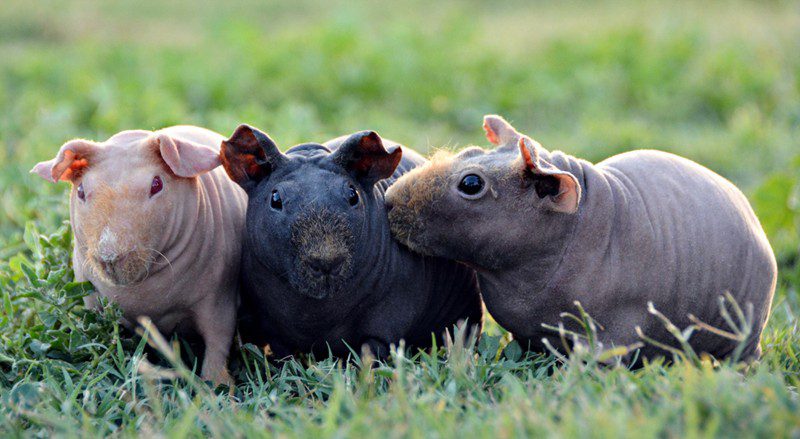
Character skinny
It is believed that the nature of the breed does not depend. This is true, but not for skinny! They are very affectionate. And there is a logical confirmation of this. Due to the action of the skinny gene, these pigs have a slightly increased metabolism, their body temperature is slightly higher than that of ordinary pigs, they feel the ambient temperature better, so when you take skinny with warm hands (they seem hot), the pigs are very pleased , they warm up and settle down in your arms with pleasure.
Given the proper care and level of care, these guinea pigs make very affectionate and loving pets. Moreover, males are often even more affectionate than females.
It is believed that the nature of the breed does not depend. This is true, but not for skinny! They are very affectionate. And there is a logical confirmation of this. Due to the action of the skinny gene, these pigs have a slightly increased metabolism, their body temperature is slightly higher than that of ordinary pigs, they feel the ambient temperature better, so when you take skinny with warm hands (they seem hot), the pigs are very pleased , they warm up and settle down in your arms with pleasure.
Given the proper care and level of care, these guinea pigs make very affectionate and loving pets. Moreover, males are often even more affectionate than females.
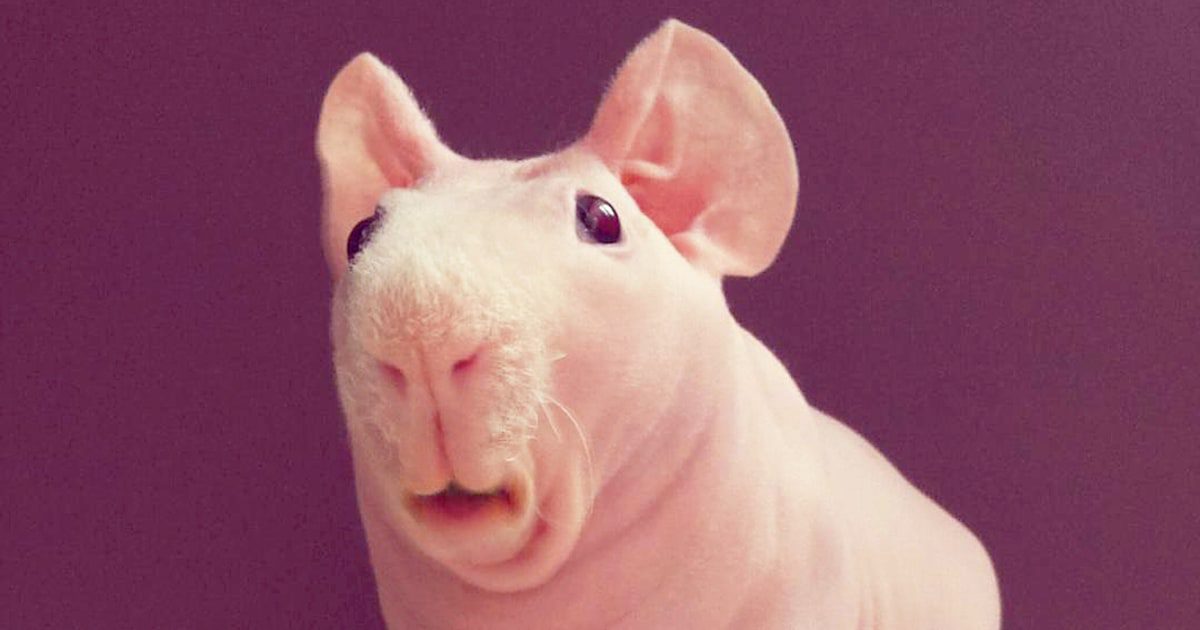
skinny guinea pig colors
It would seem, what colors can there be if skinny, in principle, has almost no hair? And yet. Lacking hair, these guinea pigs have varying skin pigmentation that can be chocolate, cinnamon, silver, lilac, white, or golden. And then there are skinny albino and even skinny Dalmatians! Multi-color combinations are also not uncommon, including two-color and three-color combinations.
Today, the most popular color among skinny lovers is chocolate.
It would seem, what colors can there be if skinny, in principle, has almost no hair? And yet. Lacking hair, these guinea pigs have varying skin pigmentation that can be chocolate, cinnamon, silver, lilac, white, or golden. And then there are skinny albino and even skinny Dalmatians! Multi-color combinations are also not uncommon, including two-color and three-color combinations.
Today, the most popular color among skinny lovers is chocolate.



